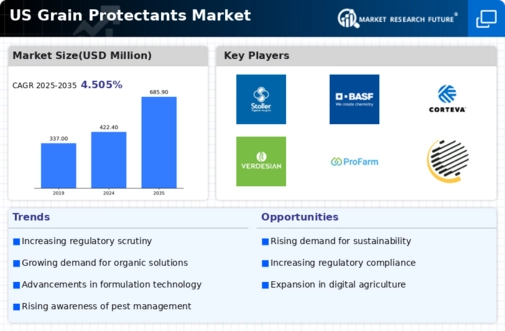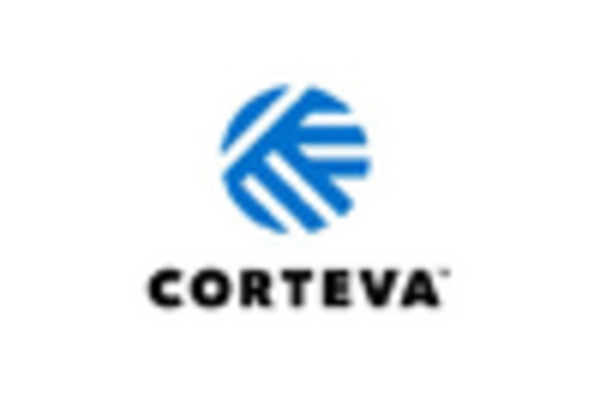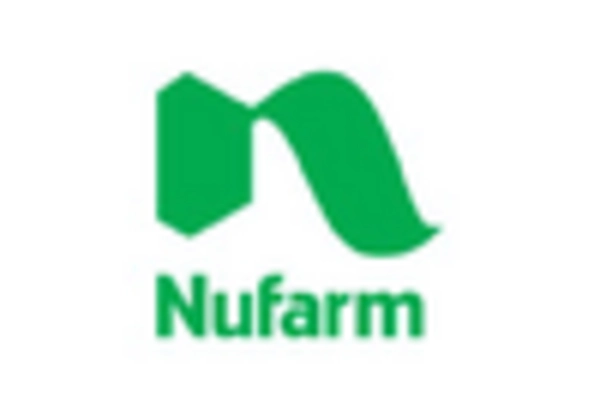Rising Demand for Food Security
The increasing global population and the corresponding demand for food have heightened the focus on food security in the US. This trend is driving the grain protectants market as farmers seek effective solutions to minimize post-harvest losses. According to the USDA, approximately 10-20% of harvested grains are lost due to pests and spoilage, underscoring the necessity for grain protectants. The grain protectants market is thus experiencing growth as stakeholders prioritize the preservation of grain quality and quantity. Enhanced food security measures are likely to propel investments in innovative grain protectant solutions, further stimulating market expansion.
Increased Awareness of Chemical Residues
Consumer awareness regarding chemical residues in food products is influencing the grain protectants market. As consumers demand safer food options, there is a growing pressure on producers to minimize the use of synthetic chemicals in grain protection. The grain protectants market is responding by developing more eco-friendly and organic protectants that meet consumer expectations. This shift not only aligns with market demands but also encourages regulatory bodies to support the development of safer alternatives. As a result, the market may see a rise in the adoption of natural grain protectants, reflecting changing consumer preferences.
Technological Innovations in Grain Storage
Advancements in grain storage technologies are significantly impacting the grain protectants market. Innovations such as controlled atmosphere storage and smart monitoring systems are enhancing the ability to maintain grain quality and reduce spoilage. The USDA indicates that improved storage methods can decrease post-harvest losses by as much as 50%. Consequently, the grain protectants market is adapting to these technological changes, with a growing emphasis on developing protectants that complement modern storage solutions. This trend suggests a potential for increased market growth as producers seek to optimize their storage capabilities.
Adoption of Integrated Pest Management (IPM) Practices
The grain protectants market is witnessing a shift towards Integrated Pest Management (IPM) practices, which combine biological, cultural, and chemical methods to manage pests effectively. This approach not only reduces reliance on chemical pesticides but also promotes sustainable agricultural practices. The USDA has reported that IPM can reduce pest-related losses by up to 30%, making it an attractive option for grain producers. As more farmers adopt IPM strategies, the demand for specific grain protectants that align with these practices is likely to increase, thereby influencing the grain protectants market positively.
Government Support and Funding for Agricultural Practices
Government initiatives aimed at supporting sustainable agricultural practices are playing a crucial role in shaping the grain protectants market. Programs that provide funding and resources for research and development of effective grain protectants are becoming increasingly prevalent. The USDA has allocated substantial funds to promote innovations in grain protection, which is likely to enhance the competitiveness of the grain protectants market. This support may lead to the introduction of new products and technologies, ultimately fostering growth and sustainability within the market.

















Leave a Comment